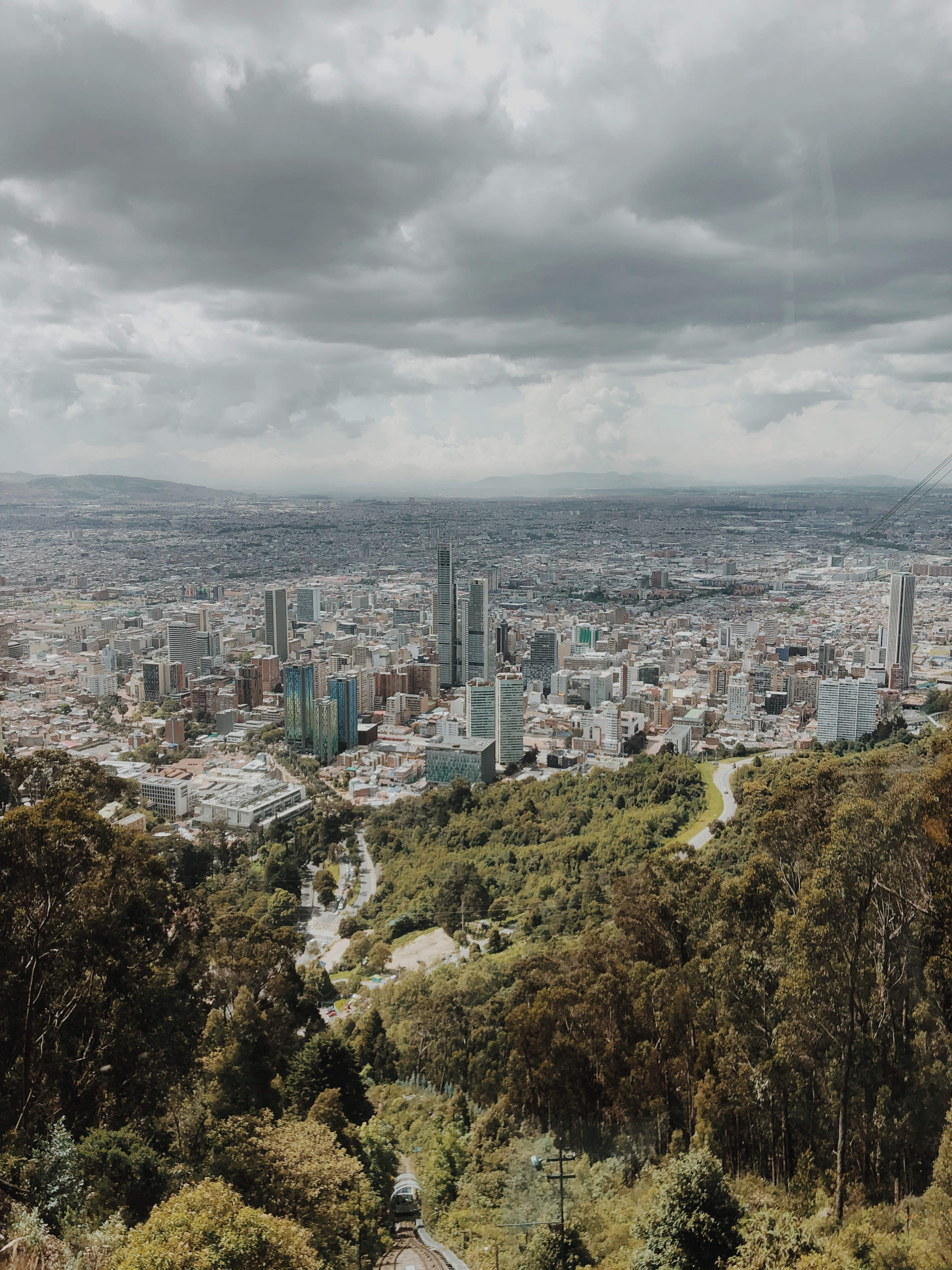This is Bogotá city
Bogota demography in 80 decades
| Demography table 1 | |||||
|---|---|---|---|---|---|
| Department / District | Census 2018 | Census 2005 | Percent 2018 | Percent 2005 | Variation 2005-2018 |
| Bogotá (Cachachos) | 2.223.770 | 2.914.837 | 30,97% | 43,62% | -691.067 |
| Bogotá (Rolos) | 2.594.398 | 1.931.927 | 36,13% | 28,25% | 662.471 |
| Demography table 2 | ||||
|---|---|---|---|---|
| Year | Population | Citizens | Other colombians | Foreign |
| 1938 | 325.650 | 322.394 | 1.221 | 407 |
| 1951 | 715.250 | 693.793 | 8.047 | 2.682 |
| 1964 | 1.697.311 | 1.425.741 | 101.839 | 33.946 |
| 1973 | 2.855.065 | 356.883 | 267.662 | 89.221 |
| 1985 | 4.236.490 | 2.668.989 | 587.813 | 195.938 |
| 1993 | 5.484.244 | 3.016.334 | 925.466 | 308.489 |
| 1996 | 5.850.861 | 1.404.207 | 1.053.155 | 351.051 |
| 2000 | 6.422.198 | 3.082.655 | 1.252.329 | 417.443 |
| 2005 | 6.778.691 | 1.931.927 | 1.448.945 | 482.982 |
| 2018 | 7.412.566 | 2.594.398 | 1.945.799 | 648.600 |
| 2020 | 7.743.955 | 2.168.307 | 2.090.868 | 696.956 |
Know something about Bogotá city

A little introduction
The capital of Colombia, bustling and thought to be the seat of government, is not a colonial jewel of the Caribbean like Cartagena or as touristy as Medellín, where Pablo Escobar lived. Instead, Bogotans seem to speak of their city the way Milanese sometimes speak of Milan: as a place where they love to live and work, but might be hesitant to recommend it to a foreigner to savor the wealth of their country.
Yet wealth abounds in Bogotá, from its street art portraying a history of armed conflict to the towering hills of the forest reserve along its eastern edge. In addition, it is an ideal place to understand Colombia. I came here because I'm on a one-year tour to go to each of The New York Times' 52 Places to Visit in 2018 destinations and Colombia ranks second. Last July, the guerrillas of the Revolutionary Armed Forces of Colombia (Farc) surrendered their weapons to the government, thus marking the end of a struggle that had made it impossible to explore some parts of the country.
Eat something here
Andrés Carne de Res Before arriving in Bogotá, I heard two things: that I had to go to Andrés Carne de Res, as well as that it was a robbery and I would be a walking cliché if I did. Both sides seemed to agree that it would probably be the most extravagant restaurant I would ever see in my life; that, of course, meant he had to go.
Glowing red hearts, Catholic iconography, and wrought iron ceiling chandeliers with different colored spotlights are just part of the décor of this “more is more” restaurant chain. Monday through Friday, go to Andrés DC for steak and traditional food. His name is inspired by Dante's The Divine Comedy; It has themed floors for hell, earth, purgatory, and heaven, and it is located a few minutes from the Click Clack Hotel, where I stayed for a few nights in the elegant and trendy neighborhood of El Chicó. In a nearby shopping center, there is a food court, La Plaza de Andrés, where the young Colombian professor of data journalism María Isabel Magaña took me one afternoon to enjoy arepas stuffed with cheese with corn, chicharrones and patacones (mashed green plantains and fried), while we were surrounded by objects like a life-size plastic cow with dark glasses. The main restaurant, Carne de Res, is in Chía, a municipality north of the city. It has a capacity for 2,100 people, but on the busiest nights it can accommodate up to 4,000 people and it is worth a visit on the weekend when that party fills up with salseros until three in the morning.
(For a night closer to home, try Gaira Café, which is owned by Colombian singer Carlos Vives, who has collaborated with Shakira.)
Historical Bogotá
The museum, which offers guided tours in Spanish and English, houses the largest collection of pre-Hispanic gold objects. You will learn about the spiritual lives of the Colombian indigenous tribes who believed that gold contained the energy of the sun and did not give it any monetary value. I have to confess that I got bored with seeing all those static and shiny objects, but after talking with Rodríguez, I was able to better understand the importance of the museum. "It is the story of how the Spanish went through the jungle looking for El Dorado, a city of gold - and to some extent there was some truth to it - but they went after silver and ended up with these highly evolved and spiritual people, "he said. “It is a story of greed. That is the story of how Bogotá became a Spanish town ”.
An interesting commerce site
Usaquén is a charming colonial town north of Bogotá that became part of the city in the 1950s but still feels like a world apart. In addition to the fact that there is only W Hotel in Colombia, it is also a sector for shopping and dining; on Sundays, there is a flea market where indigenous merchants sell drawstring bags and canvas shoes embroidered with traditional patterns. Similar things can be found in La Candelaria, a colonial neighborhood in the historic center of Bogotá, but I felt more relaxed walking around Usaquén. Don't miss the food stalls, which offer everything from a five-layer cake to roasted corn on the cob, dipped in butter and salt.
Bycicle lovers
Cyclists here are almost as plentiful as cars and can be seen in droves riding down equally plentiful roads restricted to them. Bogotá takes credit for being the first city to have a bicycle lane and retains that distinction, since every Sunday it closes several streets for use exclusively by cyclists, pedestrians and even acrobats.
Eager to ride on two wheels, I took a three-hour tour that made me see the city in a fascinating way, through the eyes of our guide, Michael Steven Sánchez Navas, a graffiti artist and passionate enemy of inequality. He told us about the scandal with Justin Bieber, when the Canadian singer painted graffiti on a wall in the presence of police just a few months after a patrolman shot a famous graffiti artist who lost his life, and unintentionally unleashed a riot of street performers. He spoke to us about the mistakes that in his opinion are included committed in the city, the planting of non-native and invasive trees in the Eastern Hills. "Our government decided that pines and eucalyptus were more in vogue," he said.

